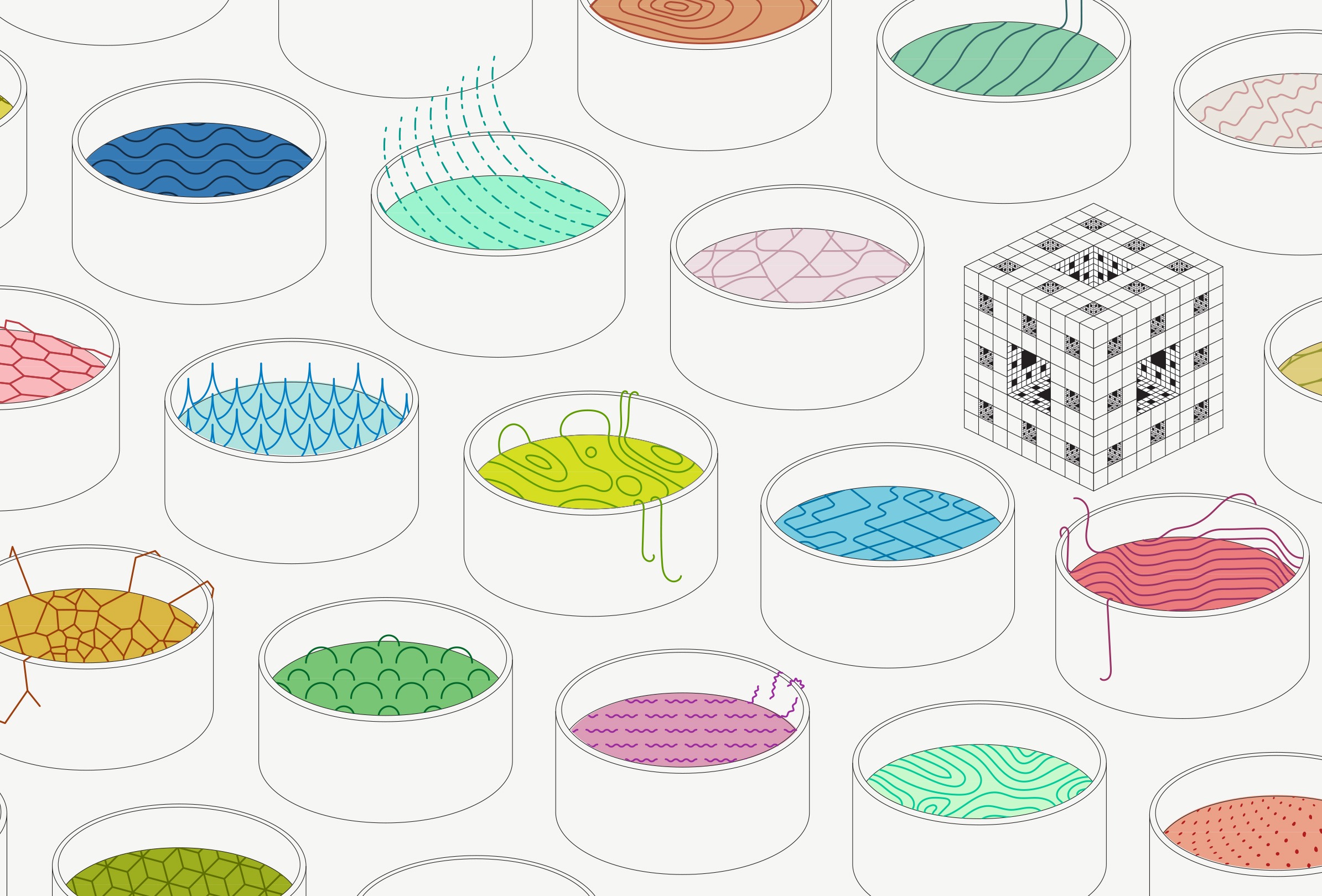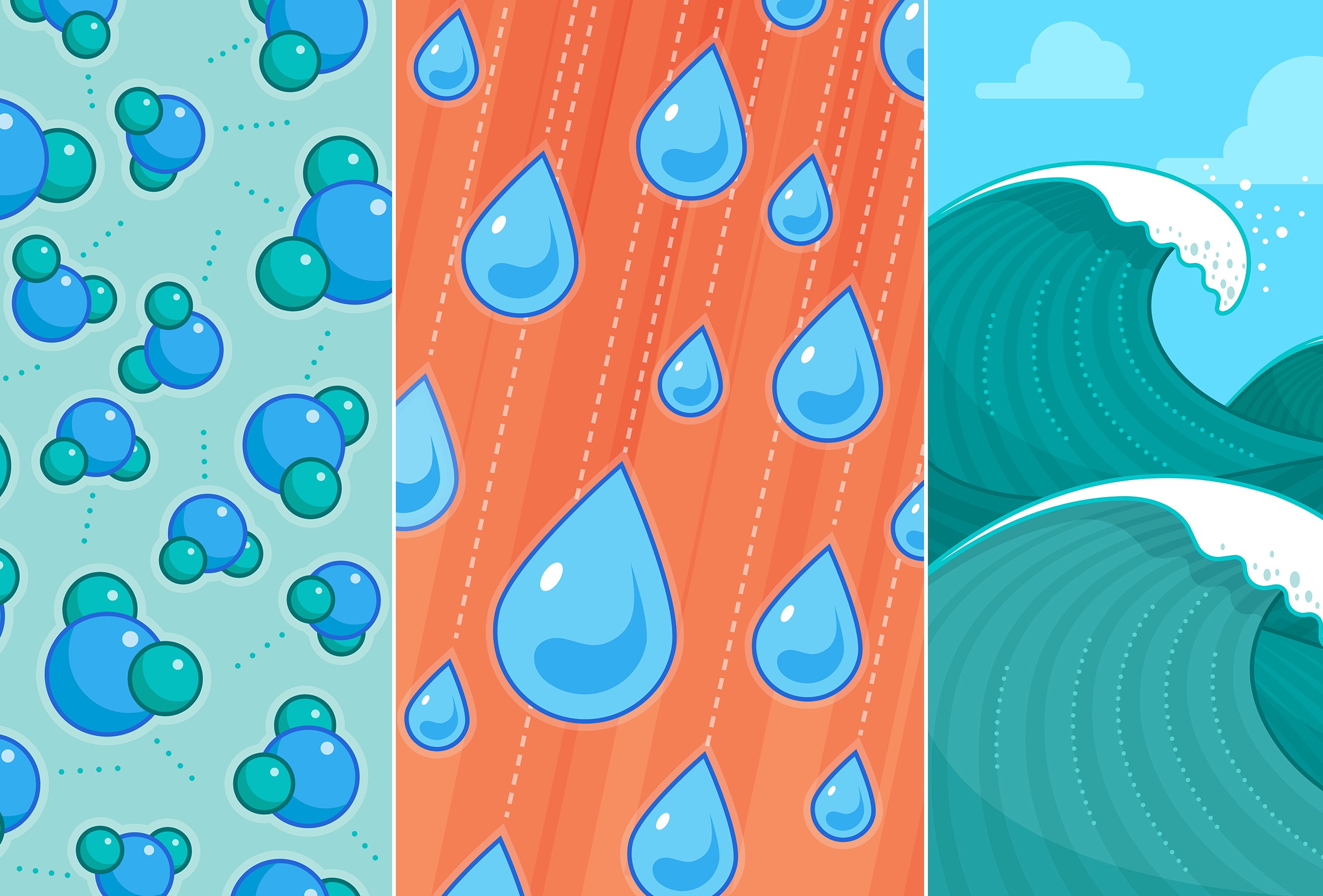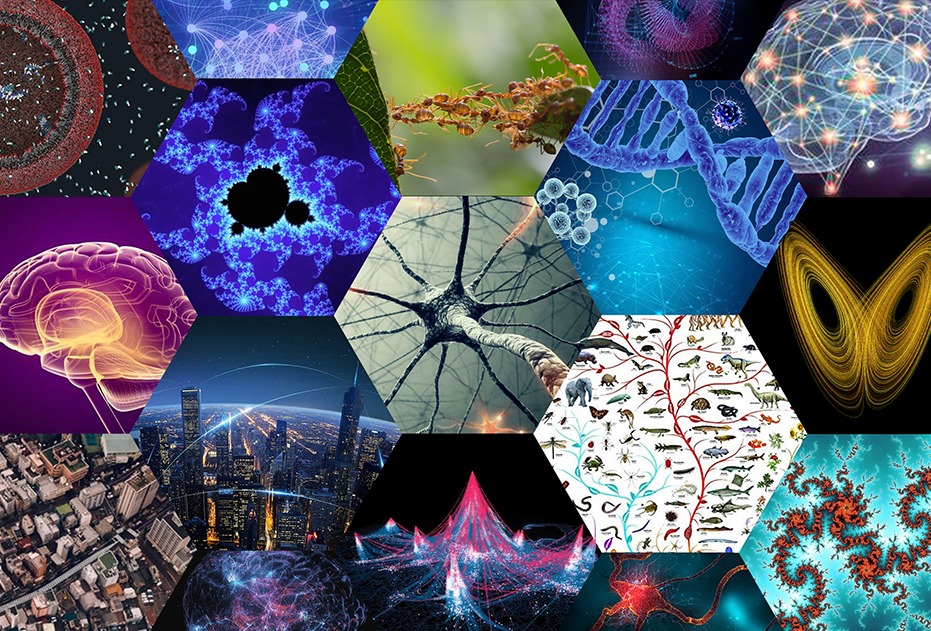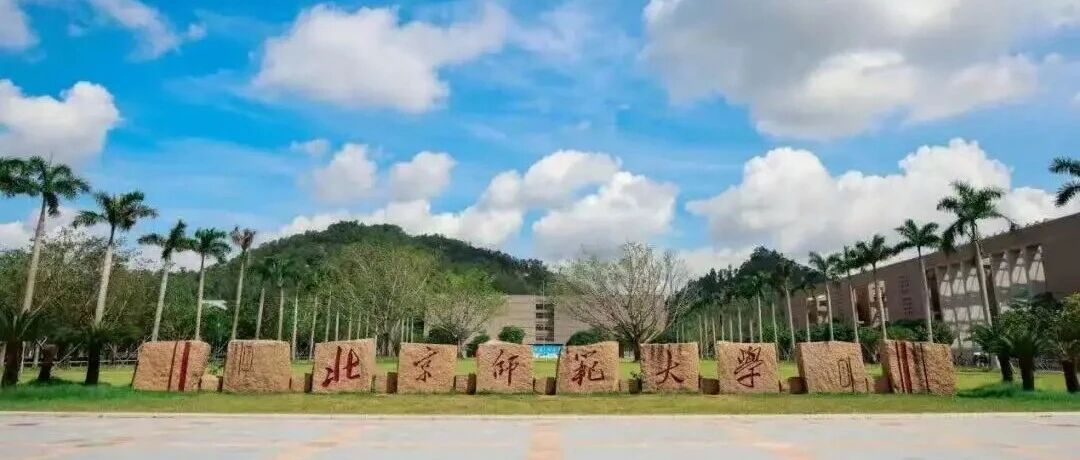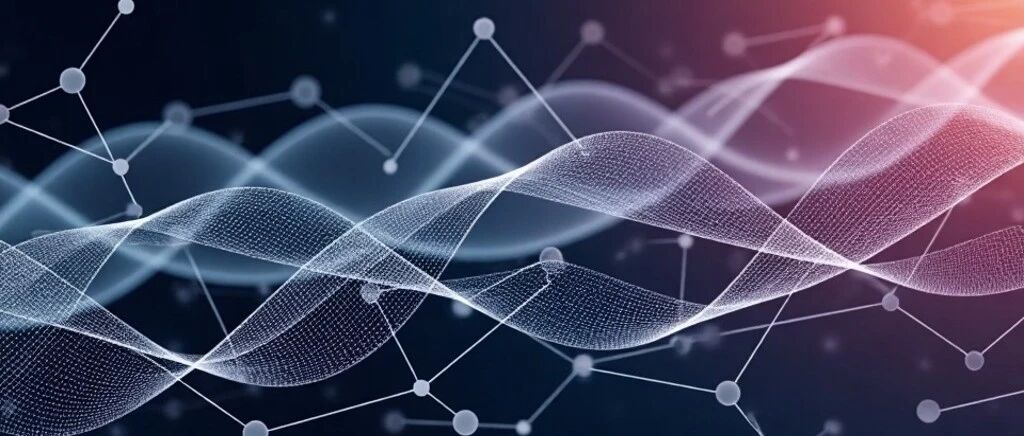-
P. Q. Nguyen, N. D. Courchesne, A. Duraj-Thatte, P. Praveschotinunt, N. S. Joshi, Engineered living materials: Prospects and challenges for using biological systems to direct the assembly of smart materials. Adv. Mater. 30, e1704847 (2018).
-
L. Ricotti et al., Biohybrid actuators for robotics: A review of devices actuated by living cells. Sci. Robot. 2, eaaq0495 (2017).
-
L. Gao et al., Recent progress in engineering functional biohybrid robots actuated by living cells. Acta Biomater. 121, 29–40 (2021).
-
M. Endo, H. Sugiyama, DNA origami nanomachines. Molecules 23, E1766 (2018).
-
J. Elbaz, M. Moshe, I. Willner, Coherent activation of DNA tweezers: A “SET-RESET” logic system. Angew. Chem. Int. Ed. Engl. 48, 3834–3837 (2009).
-
X. Arque et al., Intrinsic enzymatic properties modulate the self-propulsion of micromotors. Nat. Commun. 10, 2826 (2019).
-
Y. Li, H. Sato, Insect-computer hybrid robot. Mol. Front. J. 2, 30–42 (2018).
-
N. Ando, S. Emoto, R. Kanzaki, Odour-tracking capability of a silkmoth driving a mobile robot with turning bias and time delay. Bioinspir. Biomim. 8, 016008 (2013).
-
N. Ando, R. Kanzaki, Using insects to drive mobile robots – hybrid robots bridge the gap between biological and artificial systems. Arthropod Struct. Dev. 46, 723–735 (2017).
-
J. C. Erickson, M. Herrera, M. Bustamante, A. Shingiro, T. Bowen, Effective stimulus parameters for directed locomotion in Madagascar hissing cockroach biobot. PLoS One 10, e0134348 (2015).
-
N. Kobayashi, M. Yoshida, N. Matsumoto, K. Uematsu, Artificial control of swimming in goldfish by brain stimulation: Confirmation of the midbrain nuclei as the swimming center. Neurosci. Lett. 452, 42–46 (2009).
-
N. W. Xu et al., Developing biohybrid robotic jellyfish (Aurelia aurita) for free-swimming tests in the laboratory and in the field. Bio Protoc. 11, e3974 (2021).
-
M. A. Bedau, J. S. McCaskill, N. H. Packard, S. Rasmussen, Living technology: Exploiting life’s principles in technology. Artif. Life 16, 89–97 (2010).
-
L. Ricotti, A. Menciassi, Bio-hybrid muscle cell-based actuators. Biomed. Microdevices 14, 987–998 (2012).
-
R. Raman, R. Bashir, Biomimicry, biofabrication, and biohybrid systems: The emergence and evolution of biological design. Adv. Healthc. Mater. 6, 1700496 (2017).
-
I. Fishel et al., Ear-bot: Locust ear-on-a-chip bio-hybrid platform. Sensors (Basel) 21, 228 (2021).
-
K. B. Justus et al., A biosensing soft robot: Autonomous parsing of chemical signals through integrated organic and inorganic interfaces. Sci. Robot. 4, eaax0765 (2019).
-
M. J. Anderson, J. G. Sullivan, T. K. Horiuchi, S. B. Fuller, T. L. Daniel, A bio-hybrid odor-guided autonomous palm-sized air vehicle. Bioinspir. Biomim. 16, 026002 (2020).
-
J. V. Huang, Y. Wei, H. G. Krapp, A biohybrid fly-robot interface system that performs active collision avoidance. Bioinspir. Biomim. 14, 065001 (2019).
-
T. Patino, R. Mestre, S. Sanchez, Miniaturized soft bio-hybrid robotics: A step forward into healthcare applications. Lab Chip 16, 3626–3630 (2016).
-
R. W. Carlsen, M. Sitti, Bio-hybrid cell-based actuators for microsystems. Small 10, 3831–3851 (2014).
-
B. Mazzolai, C. Laschi, A vision for future bioinspired and biohybrid robots. Sci. Robot. 5, eaba6893 (2020).
-
P. Kothari, C. Johnson, C. Sandone, P. A. Iglesias, D. N. Robinson, How the mechanobiome drives cell behavior, viewed through the lens of control theory. J. Cell Sci. 132, jcs234476 (2019).
-
M. Filippi, T. Buchner, O. Yasa, S. Weirich, R. K. Katzschmann, Microfluidic tissue engineering and bio-actuation. Adv. Mater. 34, 2108427 (2022).
-
J. Xi, J. J. Schmidt, C. D. Montemagno, Self-assembled microdevices driven by muscle. Nat. Mater. 4, 180–184 (2005).
-
Y. Tanaka et al., An actuated pump on-chip powered by cultured cardiomyocytes. Lab Chip 6, 362–368 (2006).
-
A. W. Feinberg et al., Muscular thin films for building actuators and powering devices. Science 317, 1366–1370 (2007).
-
Y. Morimoto, H. Onoe, S. Takeuchi, Biohybrid robot powered by an antagonistic pair of skeletal muscle tissues. Sci. Robot. 3, eaat4440 (2018).
-
S.-J. Park et al., Phototactic guidance of a tissue-engineered soft-robotic ray. Science 353, 158–162 (2016).
-
K. Y. Lee et al., An autonomously swimming biohybrid fish designed with human cardiac biophysics. Science 375, 639–647 (2022).
-
P. Won, S. H. Ko, C. Majidi, A. W. Feinberg, V. A. Webster-Wood, Biohybrid actuators for soft robotics: Challenges in scaling up. Actuators 9, 96 (2020).
-
S. Belkin et al., Remote detection of buried landmines using a bacterial sensor. Nat. Biotechnol. 35, 308–310 (2017).
-
N. Borghol et al., Monitoring of E. coli immobilization on modified gold electrode: A new bacteria-based glucose sensor. Biotechnol. Bioprocess Eng.; BBE 15, 220–228 (2010).
-
A. Rantala et al., Luminescent bacteria-based sensing method for methylmercury specific determination. Anal. Bioanal. Chem. 400, 1041–1049 (2011).
-
A. Ivask, K. Hakkila, M. Virta, Detection of organomercurials with sensor bacteria. Anal. Chem. 73, 5168–5171 (2001).
-
A. R. Salgarella et al., A bio-hybrid mechanotransduction system based on ciliate cells. Microelectron. Eng. 144, 51–56 (2015).
-
V. Vurro, I. Venturino, G. Lanzani, A perspective on the use of light as a driving element for bio-hybrid actuation. Appl. Phys. Lett. 120, 080502 (2022).
-
S. Tsuda, K.-P. Zauner, Y.-P. Gunji, Robot control with biological cells. Biosystems 87, 215–223 (2007).
-
R. Raman et al., Optogenetic skeletal muscle-powered adaptive biological machines. Proc. Natl. Acad. Sci. U.S.A. 113, 3497–3502 (2016).
-
J. S. Meyer et al., Modeling early retinal development with human embryonic and induced pluripotent stem cells. Proc. Natl. Acad. Sci. U.S.A. 106, 16698–16703 (2009).
-
L. F. Marcos, S. L. Wilson, P. Roach, Tissue engineering of the retina: From organoids to microfluidic chips. J. Tissue Eng. 12, 20417314211059876 (2021).
-
T. Yagi, M. Watanabe, Y. Ohnishi, S. Okuma, T. Mukai, “Biohybrid retinal implant: research and development update in 2005” in Conference Proceedings. 2nd International IEEE EMBS Conference on Neural Engineering, 2005 (Piscataway, NJ, IEEE, 2005), pp. 248–251. DOI: 10.1109/CNE.2005.1419603.
-
P. Mahmoudi, H. Veladi, F. G. Pakdel, Optogenetics, tools and applications in neurobiology. J. Med. Signals Sens. 7, 71–79 (2017).
-
E. Macis, M. Tedesco, P. Massobrio, R. Raiteri, S. Martinoia, An automated microdrop delivery system for neuronal network patterning on microelectrode arrays. J. Neurosci. Methods 161, 88–95 (2007).
-
S. Buccelli et al., A neuromorphic prosthesis to restore communication in neuronal networks. iScience 19, 402–414 (2019).
-
R. M. R. Pizzi et al., A cultured human neural network operates a robotic actuator. Biosystems 95, 137–144 (2009).
-
O. Aydin et al., Neuromuscular actuation of biohybrid motile bots. Proc. Natl. Acad. Sci. U.S.A. 116, 19841–19847 (2019).
-
O. Aydin et al., Development of 3D neuromuscular bioactuators. APL Bioeng. 4, 016107 (2020).
-
C. Cvetkovic, M. H. Rich, R. Raman, H. Kong, R. Bashir, A 3D-printed platform for modular neuromuscular motor units. Microsyst. Nanoeng. 3, 17015 (2017).
-
T. Ishisaka, H. Sato, Y. Akiyama, Y. Furukawa, K. Morishima, Muscle-actuated power generator using cultured cardiomyocytes and PZT fiber. Conf. Proc. IEEE Eng. Med. Biol. Soc. (Suppl.), 6685–6688 (2006).
-
J. Xi, E. Dy, M.-T. Hung, C. Montemagno. Development of a self-assembled muscle-powered piezoelectric microgenerator. NSTI-Nanotech. 1, 3–6 ( 2004).
-
V. Chaturvedi, P. Verma, Microbial fuel cell: A green approach for the utilization of waste for the generation of bioelectricity. Bioresour. Bioprocess. 3, 38 (2016).
-
L. Li, Z. Xu, X. Huang, Whole-cell-based photosynthetic biohybrid systems for energy and environmental applications. ChemPlusChem 86, 1021–1036 (2021).
-
R. Raman et al., Damage, healing, and remodeling in optogenetic skeletal muscle bioactuators. Adv. Healthc. Mater. 6, 1700030 (2017).
-
G. M. Whitesides, The origins and the future of microfluidics. Nature 442, 368–373 (2006).
-
R. Z. Gao, C. L. Ren, Synergizing microfluidics with soft robotics: A perspective on miniaturization and future directions. Biomicrofluidics 15, 011302 (2021).
-
A. Konda et al., Reversible mechanical deformations of soft microchannel networks for sensing in soft robotic systems. Adv. Intell. Syst. 1, 1900027 (2019).
-
M. Wehner et al., An integrated design and fabrication strategy for entirely soft, autonomous robots. Nature 536, 451–455 (2016).
-
K. McDonald, T. Ranzani, Hardware methods for onboard control of fluidically actuated soft robots. Front. Robot. AI 8, 720702 (2021).
-
P. Samal, C. van Blitterswijk, R. Truckenm€uller, S. Giselbrecht, Grow with the flow: when morphogenesis meets microfluidics. Adv. Mater. 31, e1805764 (2019).
-
V. Chokkalingam et al., Probing cellular heterogeneity in cytokine-secreting immune cells using droplet-based microfluidics. Lab Chip 13, 4740–4744 (2013).
-
J. Pelletier et al., Physical manipulation of the Escherichia coli chromosome reveals its soft nature. Proc. Natl. Acad. Sci. U.S.A. 109, E2649–E2656 (2012).
-
A. Manbachi et al., Microcirculation within grooved substrates regulates cell positioning and cell docking inside microfluidic channels. Lab Chip 8, 747–754 (2008).
-
W. J. Polacheck, R. Li, S. G. M. Uzel, R. D. Kamm, Microfluidic platforms for mechanobiology. Lab Chip 13, 2252–2267 (2013).
-
X. Joseph, V. Akhil, A. Arathi, P. V. Mohanan, Comprehensive development in organ-on-a-chip technology. J. Pharm. Sci. 111, 18–31 (2022).
-
J. J. Tronolone, A. Jain, Engineering new microvascular networks on-chip: Ingredients, assembly, and best practices. Adv. Funct. Mater. 31, 2007199 (2021).
-
T. Yue et al., A modular microfluidic system based on a multilayered configuration to generate large-scale perfusable microvascular networks. Microsyst. Nanoeng. 7, 4 (2021).
-
A. Dellaquila, C. Le Bao, D. Letourneur, T. Simon-Yarza, In vitro strategies to vascularize 3D physiologically relevant models. Adv. Sci. (Weinh.) 8, e2100798 (2021).
-
L. Wei, W. Li, E. Entcheva, Z. Li, Microfluidics-enabled 96-well perfusion system for high-throughput tissue engineering and long-term all-optical electrophysiology. Lab Chip 20, 4031–4042 (2020).
-
R. Visone et al., Cardiac meets skeletal: What’s new in microfluidic models for muscle tissue engineering. Molecules 21, 1128 (2016).
-
O. F. Vila et al., Quantification of human neuromuscular function through optogenetics. Theranostics 9, 1232–1246 (2019).
-
L. Tan, K. Schirmer, Cell culture-based biosensing techniques for detecting toxicity in water. Curr. Opin. Biotechnol. 45, 59–68 (2017).
-
J. R. van der Meer, Towards improved biomonitoring tools for an intensified sustainable multi-use environment. Microb. Biotechnol. 9, 658–665 (2016).
-
Nano-Tera.ch, Nano-Tera [homepage]. http://www.nanotera.ch/#desc. Accessed 11 August 2022.
-
National Center for Advancing Translational Sciences, Tissue chips in space. 2016 https://ncats.nih.gov/tissuechip/projects/space. Accessed 11 August 2022.
-
D. Romano, E. Donati, G. Benelli, C. Stefanini, A review on animal-robot interaction: From bio-hybrid organisms to mixed societies. Biol. Cybern. 113, 201–225 (2019).
-
M. M. Stanton, C. Trichet-Paredes, S. Sanchez, Applications of three-dimensional (3D) printing for microswimmers and bio-hybrid robotics. Lab Chip 15, 1634–1637 (2015).
-
K. Y. Chung, N. C. Mishra, C. C. Wang, F. H. Lin, K. H. Lin, Fabricating scaffolds by microfluidics. Biomicrofluidics 3, 22403 (2009).
-
T. Rossow, P. S. Lienemann, D. J. Mooney, Cell microencapsulation by droplet microfluidic templating. Macromol. Chem. Phys. 218, 1600380 (2017).
-
L. P. B. Guerzoni et al., A layer-by-layer single-cell coating technique to produce injectable beating mini heart tissues via microfluidics. Biomacromolecules 20, 3746–3754 (2019).
-
S. G. M. Uzel, A. Pavesi, R. D. Kamm, Microfabrication and microfluidics for muscle tissue models. Prog. Biophys. Mol. Biol. 115, 279–293 (2014).
-
J. Krieger, B.-W. Park, C. R. Lambert, C. Malcuit, 3D skeletal muscle fascicle engineering is improved with TGF-β1 treatment of myogenic cells and their co-culture with myofibroblasts. PeerJ 6, e4939 (2018).
-
P. Thummarati, M. Kino-Oka, Effect of co-culturing fibroblasts in human skeletal muscle cell sheet on angiogenic cytokine balance and angiogenesis. Front. Bioeng. Biotechnol. 8, 578140 (2020).
-
A. Shahin-Shamsabadi, P. R. Selvaganapathy, A 3D self-assembled in vitro model to simulate direct and indirect interactions between adipocytes and skeletal muscle cells. Adv. Biosyst. 4, e2000034 (2020).
-
B. J. Stottlemire, A. R. Chakravarti, J. W. Whitlow, C. J. Berkland, M. He, Remote-controlled 3D porous magnetic interface toward high-throughput dynamic 3D cell culture. ACS Biomater. Sci. Eng. 7, 4535–4544 (2021).
-
L. S. Gardel, L. A. Serra, R. L. Reis, M. E. Gomes, Use of perfusion bioreactors and large animal models for long bone tissue engineering. Tissue Eng. Part B Rev. 20, 126–146 (2014).
-
B.-N. B. Nguyen, H. Ko, R. A. Moriarty, J. M. Etheridge, J. P. Fisher, Dynamic bioreactor culture of high volume engineered bone tissue. Tissue Eng. Part A 22, 263–271 (2016).
-
M. Juhas, N. Bursac, Roles of adherent myogenic cells and dynamic culture in engineered muscle function and maintenance of satellite cells. Biomaterials 35, 9438–9446 (2014).
-
S. Hosseinzadeh, S. M. Rezayat, A. Giaseddin, A. Aliyan, M. Soleimani, Microfluidic system for synthesis of nanofibrous conductive hydrogel and muscle differentiation. J. Biomater. Appl. 32, 853–861 (2018).
-
S. Jana, S. K. Levengood, M. Zhang, Anisotropic materials for skeletal muscle tissue engineering. Adv. Mater. 28, 10588–10612 (2016).
-
M. Filippi, G. Born, D. Felder-Flesch, A. Scherberich, Use of nanoparticles in skeletal tissue regeneration and engineering. Histol. Histopathol. 35, 331–350 (2020).
-
M. A. Daniele, D. A. Boyd, A. A. Adams, F. S. Ligler, Microfluidic strategies for design and assembly of microfibers and nanofibers with tissue engineering and regenerative medicine applications. Adv. Healthc. Mater. 4, 11–28 (2015).
-
M. Filippi, G. Born, M. Chaaban, A. Scherberich, Natural polymeric scaffolds in bone regeneration. Front. Bioeng. Biotechnol. 8, 474 (2020).
-
M. Zhao et al., A flexible microfluidic strategy to generate grooved microfibers for guiding cell alignment. Biomater. Sci. 9, 4880–4890 (2021).
-
G. Isu et al., Fatty acid-based monolayer culture to promote in vitro neonatal rat cardiomyocyte maturation. Biochim. Biophys. Acta Mol. Cell Res. 1867, 118561 (2020).
-
L. Wan, J. Flegle, B. Ozdoganlar, P. R. LeDuc, Toward vasculature in skeletal muscle-on-a-chip through thermo-responsive sacrificial templates. Micromachines (Basel) 11, 907 (2020).
-
T. Osaki, S. G. M. Uzel, R. D. Kamm, Microphysiological 3D model of amyotrophic lateral sclerosis (ALS) from human iPS-derived muscle cells and optogenetic motor neurons. Sci. Adv. 4, eaat5847 (2018).
-
A. Marsano et al., Beating heart on a chip: A novel microfluidic platform to generate functional 3D cardiac microtissues. Lab Chip 16, 599–610 (2016).
-
J. J. Wan, Z. Qin, P. Y. Wang, Y. Sun, X. Liu, Muscle fatigue: General understanding and treatment. Exp. Mol. Med. 49, e384 (2017).
-
K. Yamamoto et al., Development of a human neuromuscular tissue-on-a-chip model on a 24-well-plate-format compartmentalized microfluidic device. Lab Chip 21, 1897–1907 (2021).
-
C. Forro et al., Modular microstructure design to build neuronal networks of defined functional connectivity. Biosens. Bioelectron. 122, 75–87 (2018).
-
F. Morin et al., Constraining the connectivity of neuronal networks cultured on microelectrode arrays with microfluidic techniques: A step towards neuron-based functional chips. Biosens. Bioelectron. 21, 1093–1100 (2006).
-
E. Berthier, E. W. K. Young, D. Beebe, Engineers are from PDMS-land, biologists are from Polystyrenia. Lab Chip 12, 1224–1237 (2012).
-
R. George et al., Plasticity and adaptation in neuromorphic biohybrid systems. iScience 23, 101589 (2020).
-
H. Keren, J. Partzsch, S. Marom, C. G. Mayr, A biohybrid setup for coupling biological and neuromorphic neural networks. Front. Neurosci. 13, 432 (2019).
-
A. Menciassi, S. Takeuchi, R. D. Kamm, Biohybrid systems: Borrowing from nature to make better machines. APL Bioeng. 4, 020401 (2020).
-
U. Haessler, Y. Kalinin, M. A. Swartz, M. Wu, An agarose-based microfluidic platform with a gradient buffer for 3D chemotaxis studies. Biomed. Microdevices 11, 827–835 (2009).
-
E. Bayir, M. Sahinler, M. M. Celtikoglu, A. Sendemir, “Bioreactors in tissue engineering: Mimicking the microenvironment” in Biomaterials for Organ and Tissue Regeneration, N. E. Vrana, H. Knopf-Marques,
-
J. Barthes, Eds. (Sawston, UK, Woodhead Publishing, 2020), chap. 27, pp. 709–752. 10.1016/B978-0-08-102906-0.00018-0.
-
H. Eghbali, M. M. Nava, D. Mohebbi-Kalhori, M. T. Raimondi, Hollow fiber bioreactor technology for tissue engineering applications. Int. J. Artif. Organs 39, 1–15 (2016).
-
C. J. Bettinger et al., Three-dimensional microfluidic tissue-engineering scaffolds using a flexible biodegradable polymer. Adv. Mater. 18, 165–169 (2005).
-
G. J. Amador et al., Temperature gradients drive bulk flow within microchannel lined by fluid-fluid interfaces. Small 15, e1900472 (2019).
-
V. Cacucciolo et al., Stretchable pumps for soft machines. Nature 572, 516–519 (2019).
-
N. Diban, D. Stamatialis, Polymeric hollow fiber membranes for bioartificial organs and tissue engineering applications. J. Chem. Technol. Biotechnol. 89, 633–643 (2014).
-
E. Acome et al., Hydraulically amplified self-healing electrostatic actuators with muscle-like performance. Science 359, 61–65 (2018).
-
S. Agarwal, F. K. Chan, B. Rallabandi, M. Gazzola, S. Hilgenfeldt, An unrecognized inertial force induced by flow curvature in microfluidics. Proc. Natl. Acad. Sci. U.S.A. 118, e2103822118 (2021).
-
Y. Bhosale, G. Vishwanathan, T. Parthasarathy, G. Juarez, M. Gazzola, Multi-curvature viscous streaming: Flow topology and particle manipulation. ArXiv [Preprint] (2021).
-
https://arxiv.org/abs/2111.07184 D. Di Carlo, Inertial microfluidics. Lab Chip 9, 3038–3046 (2009).
-
J. Zhang et al., Fundamentals and applications of inertial microfluidics: A review. Lab Chip 16, 10–34 (2016).
-
J. M. Martel, M. Toner, Inertial focusing in microfluidics. Annu. Rev. Biomed. Eng. 16, 371–396 (2014).







